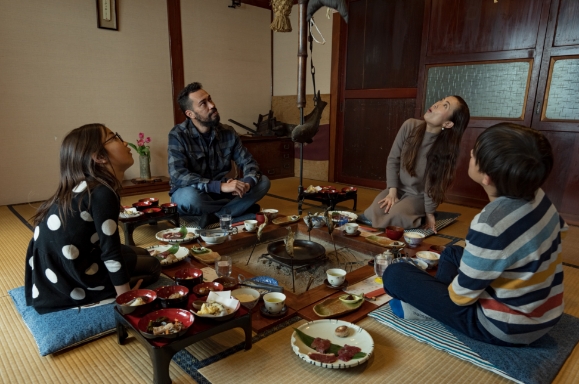02 Snow Country Food
A story of life-preserving
food culture as deep as the
snow it was inspired by.
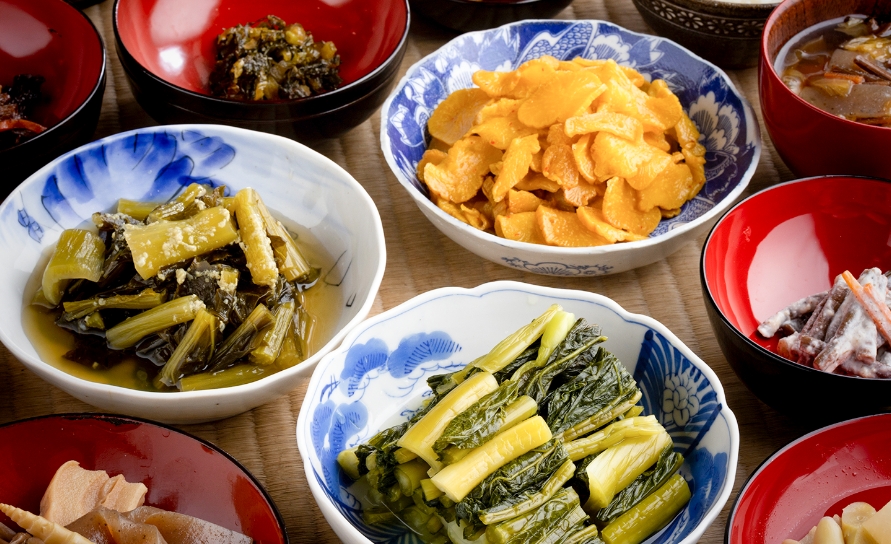
Lasting from November to April, winters in Tokamachi are long and harsh. As fields covered in heavy snow made it impossible to harvest crops, it was necessary to preserve food either by using snow, or by making preserved foods using salt or fermentation. Knowledge about food preservation was developed over hundreds of years, and this traditional wisdom was passed down generation to generation.
The same snow that prevented new crops from being grown and harvested also helped preserve foods prepared earlier in the year. Some vegetables were left to sleep in the snow to increase or keep their sweetness, while other wild vegetables and mushrooms were pickled in salt, or dried.
Vegetables such as radishes were preserved by keeping them in the snow and eaten by spring. Other foods, such as raw fish, were preserved in yukimuro or yukiana, a kind of ice house, where snow was used to keep things cold.
Deep snow and high mountains effectively cut Tokamachi off from other regions, making it necessary for Tokamachi to become independent, self-sufficient and self-sustaining. This difficulty led to Tokamachi developing unique and effective approaches to food preservation using things at hand, and also led to a food culture different from any other.
The abundant snowmelt water springing forth from the deep snow that covers Tokamachi every winter nurtures the vegetables and wild plants that are the delicious base for Tokamachi food culture.
The deep snow is a blessing that for hundreds of years has directly affected the development of a food culture distinct to Tokamachi. That culture continues even now. Visitors can experience the wisdom of food preservation when enjoying traditional dishes at izakaya and restaurants throughout Tokamachi. Or for even more intimate encounters with local cuisine, visitors can stay at traditional style Japanese inns like Setoguchi.
*Izakaya are a type of informal Japanese bar that serves alcoholic drinks and food.
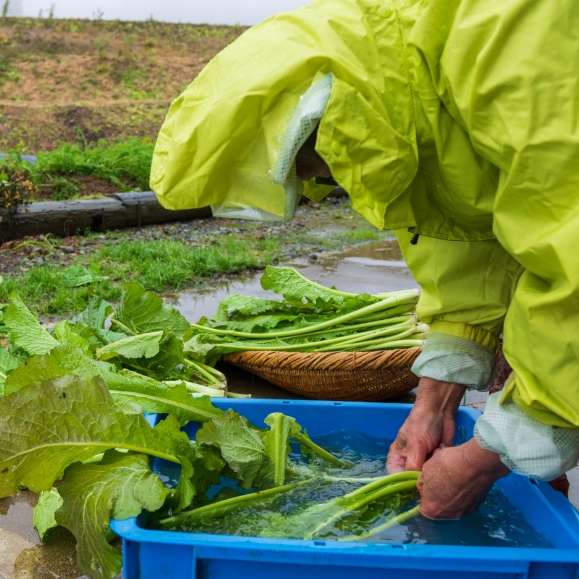
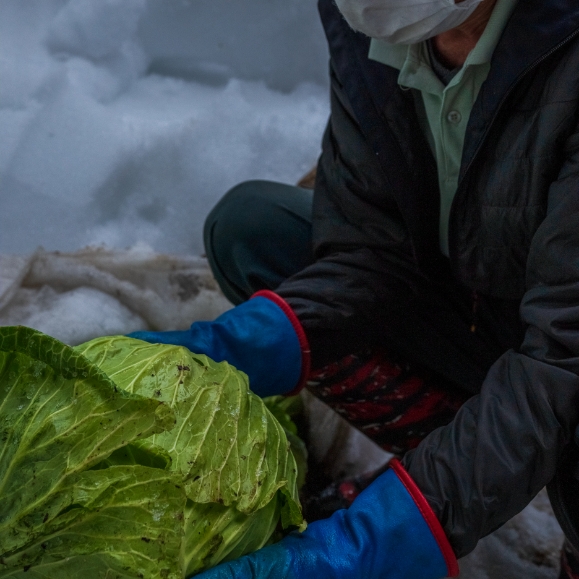
Cultural assets of Japan Heritage related
to Tokamachi food culture
Tsukena and Nīna
Tsukena and nīna are two well-known preserved foods unique to Tokamachi. Tsukena, also known as nozawana pickles, are a core part of meals during the winter. However, by the time spring arrives, they will have ferment, becoming too sour. They are then boiled to remove excess salt and become nīna, and are enjoyed with a different flavor. This process is a traditional method of sustainability brought about by necessity.
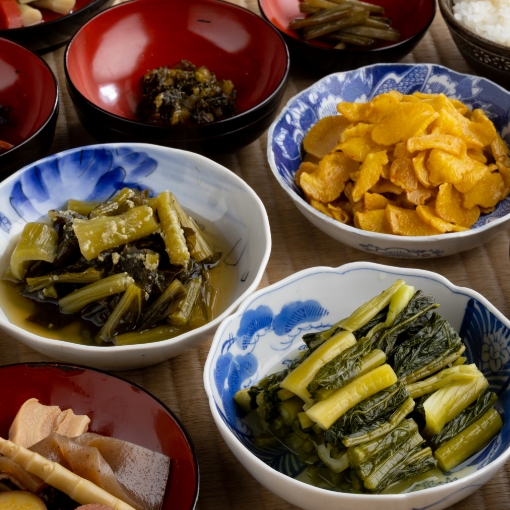
Hegisoba
One of Tokamachi’s most beloved meals, hegisoba is a regional specialty. A binding agent was needed to hold the soba flour into noodle shapes.
So a type of seaweed called funori that was used to stiffen fibers in textiles was added, giving the noodles a chewy, slippery texture. The noodles are served on a wooden tray made from stripped wood - hegu meaning to strip or peel. And thus hegisoba was born.
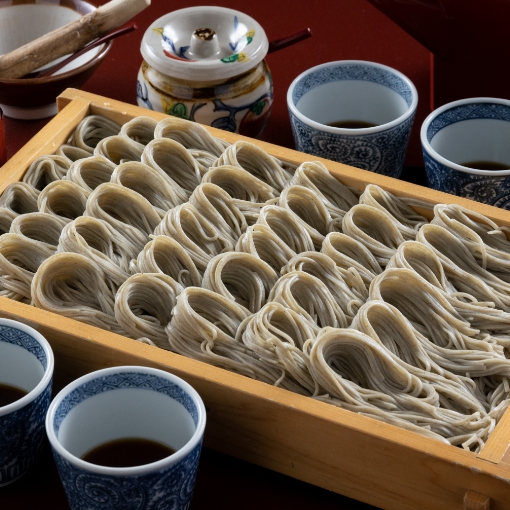
Tokamachi food culture experience
Kiyotsukyo Onsen, Setoguchi
Set near Kiyotsu Gorge, Setoguchi offers travelers the opportunity to enjoy the nostalgic taste of traditional local cuisine. Here, visitors can gather around the irori, a traditional Japanese charcoal-fired hearth, and experience Tokamachi food culture in this rural, retro Japanese style inn.
After washing away their fatigue and soaking in the hot springs, visitors will enjoy the warmth of the charcoal fire and handmade food.
Dinners typically consist of pot-cooked rice, fish, locally sourced boar or deer meat, and a range of local vegetables. Breakfasts are also served at the hearth, homemade tofu being a special highlight.
Address : 168 Nishi-Tajiri-Shin, Tokamachi City, Niigata Prefecture
TEL : 025-763-2431
